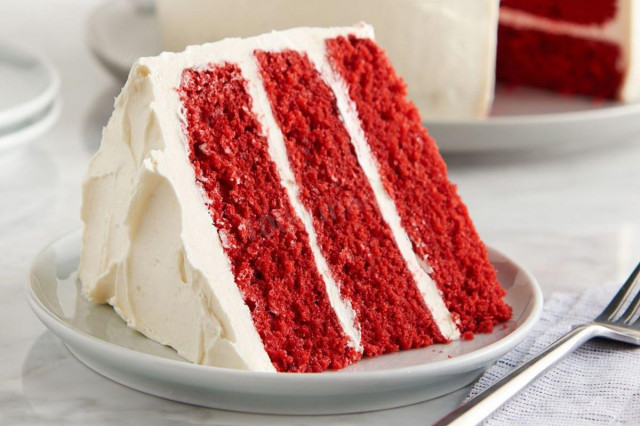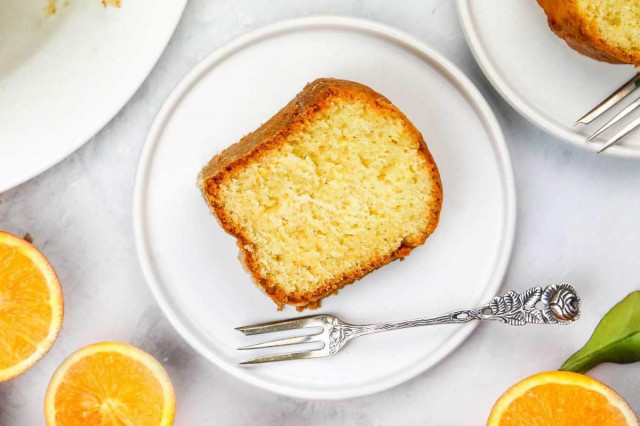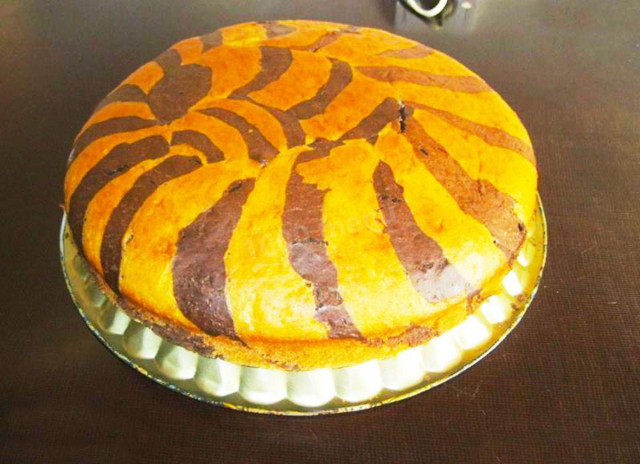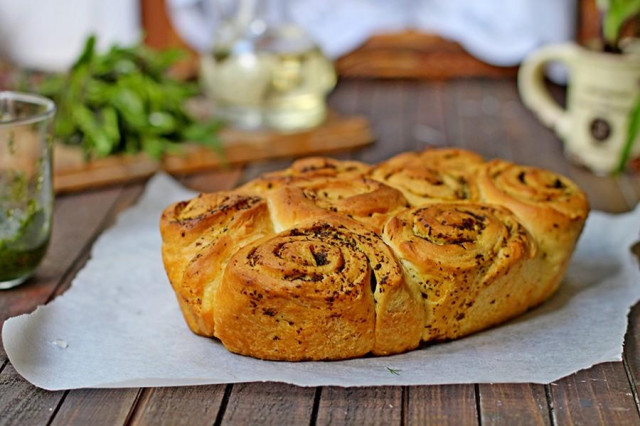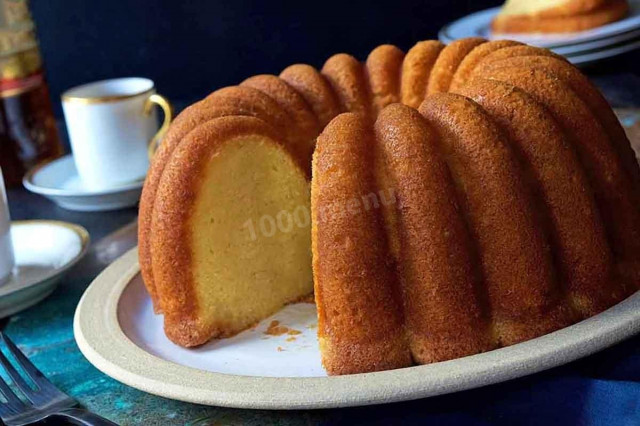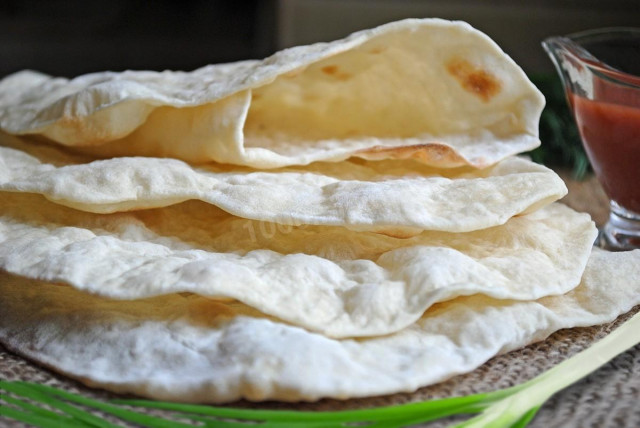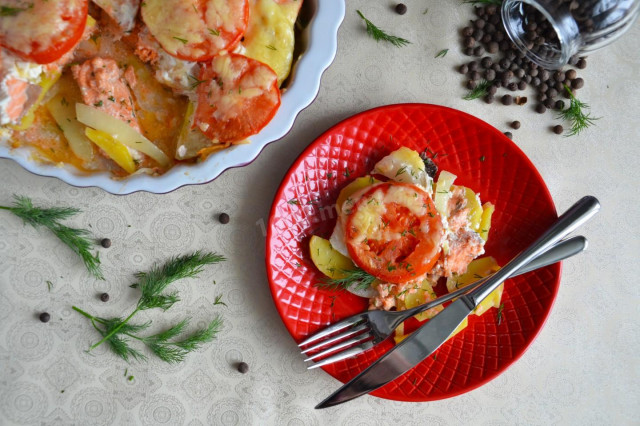Composition / ingredients
Cooking method
We begin the preparation of the cake with the fact that in a suitable-sized vessel we combine butter and sugar together. Beat the mixture with a mixer, pouring vegetable oil in the process. Break the egg whites and yolks into separate bowls. Add vanilla extract to the yolks, mix and add the mixture to the sugar-oil mixture, beat everything well. Pour in the kefir and whisk again.
In a separate small bowl, mix vinegar and dye, then pour into the previously obtained mixture. Mix it up.
In a large container, sift the flour together with baking soda, cocoa powder and salt. Mix everything thoroughly. Combine dry and wet ingredients together, mix well with a mixer. You can do this with a hand whisk.
Whisk the proteins with a whisk, not much, only until foam forms, then pour into the dough and mix until completely combined. Divide the finished dough into three parts.
Grease the baking dish with a piece of butter, sprinkle with flour and pour the dough into it for the first cake. We put the mold in a preheated 180 degree oven for 25 minutes. We put the remaining dough in the refrigerator for now. Bake all three cakes, check the readiness with a wooden skewer, for which we pierce the cake with it. If the skewer remains clean and dry, then the cake has already been baked. The main thing is not to overdo the cakes so that they do not become too dry and do not burn. Let the cakes stand in the form for 5 minutes, then remove and spread on the grill. We are waiting for them to cool down completely.
Put the butter at room temperature in a bowl and use a mixer to beat it until fluffy. After that, add the cheese in parts, beating each time until the ingredients are completely combined. Pour the powdered sugar in parts, whisk everything again. In the process of whipping, we also add vanilla extract and milk. Whisk everything until the cream becomes the desired splendor.
It remains to assemble the cake, for which the cakes are smeared with cream and stacked on top of each other. If you plan to smear cream on the sides of the cake, it is not necessary to align the cakes. We also cover the cake with cream on top. Decorate as desired or leave as is - the cake is already very beautiful and appetizing in appearance!
Caloric content of the products possible in the composition of the dish
- Whole cow's milk - 68 kcal/100g
- Milk 3.5% fat content - 64 kcal/100g
- Milk 3.2% fat content - 60 kcal/100g
- Milk 1.5% fat content - 47 kcal/100g
- Concentrated milk 7.5% fat content - 140 kcal/100g
- Milk 2.5% fat content - 54 kcal/100g
- Chicken egg - 157 kcal/100g
- Egg white - 45 kcal/100g
- Egg powder - 542 kcal/100g
- Egg yolk - 352 kcal/100g
- Ostrich egg - 118 kcal/100g
- Whole durum wheat flour fortified - 333 kcal/100g
- Whole durum wheat flour, universal - 364 kcal/100g
- Flour krupchatka - 348 kcal/100g
- Flour - 325 kcal/100g
- Granulated sugar - 398 kcal/100g
- Sugar - 398 kcal/100g
- Kefir fat - 62 kcal/100g
- Kefir of 1% fat content - 38 kcal/100g
- Low-fat kefir - 30 kcal/100g
- Kefir "doctor beefy" 1,8% fat content - 45 kcal/100g
- Kefir 2.5% fat content - 53 kcal/100g
- Butter 82% - 734 kcal/100g
- Amateur unsalted butter - 709 kcal/100g
- Unsalted peasant butter - 661 kcal/100g
- Peasant salted butter - 652 kcal/100g
- Melted butter - 869 kcal/100g
- Wine vinegar (3%) - 9 kcal/100g
- Vinegar 9% - 11 kcal/100g
- Balsamic vinegar - 88 kcal/100g
- Apple vinegar - 14 kcal/100g
- Vinegar - 11 kcal/100g
- Vegetable oil - 873 kcal/100g
- Cocoa powder - 374 kcal/100g
- Salt - 0 kcal/100g
- Cream cheese with 50% fat content - 349 kcal/100g
- Powdered sugar - 374 kcal/100g
- Baking soda - 0 kcal/100g
- Food coloring - 0 kcal/100g
- Vanilla Extract - 321 kcal/100g

